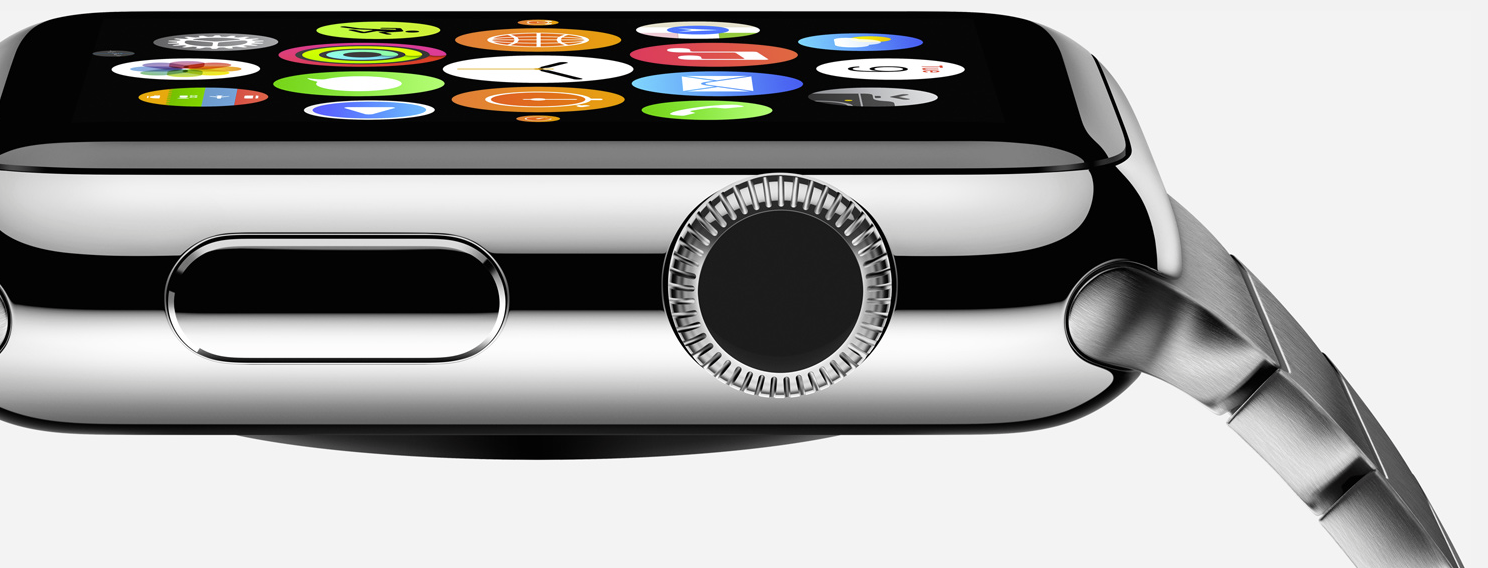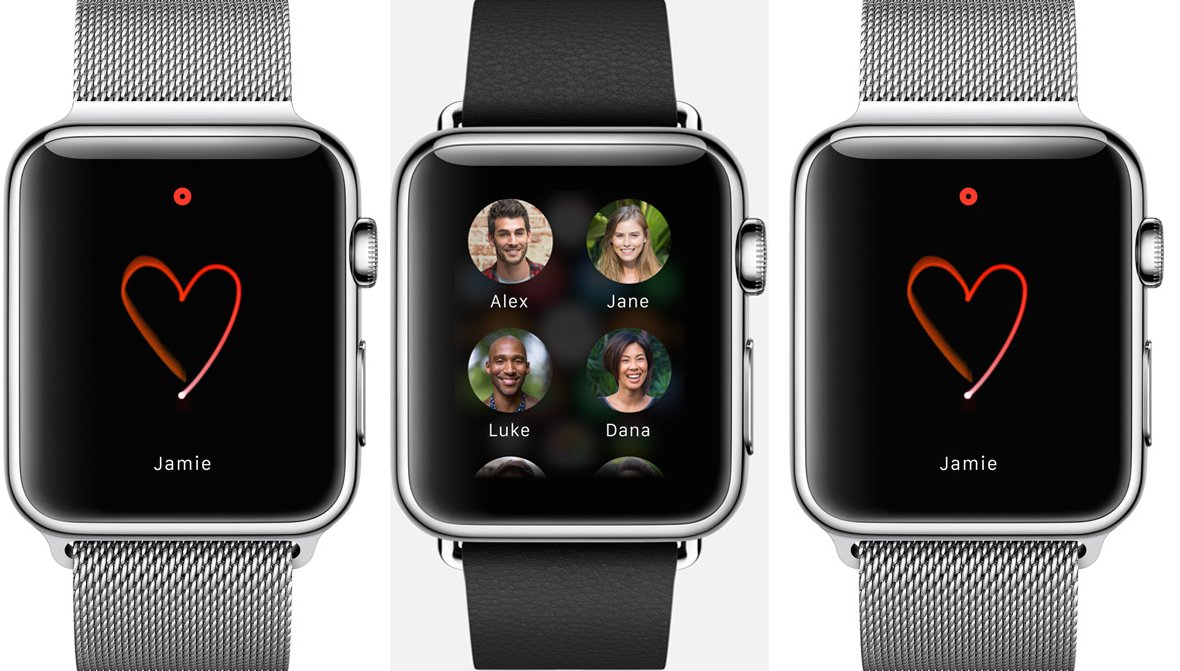With the announcement of Apple Watch on September 9, 2014, Apple formally entered the consumer market known as wearables. As analysts, buyers and consumers ogle the leather and steel, magnetic charger, digital crown and host of other features, they are missing one key point: Apple will yet again, perhaps unintentionally, change the way people work.
As William Gibson is famous for saying, “the future is already here, it just isn’t’ evenly distributed.” For a device like the Apple watch, that could not be more true, given that only a small handful of people own an Apple Watch today, and most of those people work for Apple or its partners. As soon as Apple unleashes Apple Watch into the wild, it will like all things, evolve. First thing to watch for: as Starbucks has become a third place, Apple Watch will become a third screen.
In research I conducted for Cisco and elsewhere, I discussed the impact of both “bring-your-own-device” and “bring-your-own-app” and that tablets, more so than computers, would become the second screen in many business settings. With the Apple Watch, people will have a third screen that is even less intrusive than the tablet. Apple Watch will transform what was once a rude gesture of looking at a watch, which suggested boredom and “when is this meeting going to be over” questioning, with a socially acceptable (eventually) function of paying attention.
The Apple Watch may become an attention focuser at work, much as it now intends to be the attention focuser for health. Imagine if Apple Watch integrated with enterprise apps and pushed key information to its wearer that would make them more contextually cognizant than those without the Apple Watch. It could even listen to meetings, make sense of the conversation with some future Siri, and provide insights to its owner, making them aware of its findings with a bit of a physical nudge. Individuals will certainly, as demonstrated during the announcement, create private back channels using the “scribble” app and other new forms of communication to share their disdain, or just to amuse themselves, during meetings. The Apple Watch could also, as it monitors a presentation, present contradictory positions to challenge the speaker, suggest post-meeting follow-ups that could be confirmed quickly and just imagine what it could do for a shop manager walking through a sensor-filled modern factory.
“Apple Watch will transform what was once a rude gesture of looking at a watch, which suggested boredom, with a socially acceptable (eventually) function of paying attention.”
On a more strategic front, Apple brings something to the battleground that its competitors do not: its ability to strike big corporate deals on the front-end of an announcement. Hotel rooms being Apple Watch compatible is just the beachhead of the onslaught. Apple may well make money selling watch bands, but it will establish its dominance as it changes perceptions about how people wearing the Apple Watch interact with the physical world. That will take CIOs well beyond worrying about BYOD and force them to rethink many customer-facing technologies more quickly than they might have anticipated. Luckily, Apple is using emerging standards like NFC that will provide a communications layer, a known commodity. What is said over NFC, however, will evolve, and probably rapidly. Device-to-system communications will also generate greater demand for the “Internet of Things” because the Apple Watch will require the things with which it communicates to often do something beyond local control, and that will drive awareness of what I think is the Achilles heal of the “Internet of Things”: coordination (vs. discrete action).apple-watch1-600×400
I followed watching the Apple announcements with an IBM Institute for Business Value call on the 10th where they covered change management research. My most retweeted tweet turned out to be: 74% in new change report are not fully prepared to adapt to an increasingly digital work environment #MCW2. That is both Apple’s challenge and opportunity. I have little doubt that Apple will eventually meet the expectations of a the consumer market with Apple Watch, but it was the dual nature of the iPad, its ability to become the personal appliance of knowledge work, at a reasonable price that people could buy themselves to enhance their work, that made the iPad more than an entertainment device. That same propensity for ground-up adoption will be required for the Apple Watch to become the very personal digital companion for tomorrow’s workforce.
Uncertainty comes at many levels. Although Apple Watch and its successors are likely to be a third-screen, exactly how they get used, and how long it takes for them to infiltrate the work experience remain uncertain. In both cases, CIOs needs to watch carefully for how the Apple Watch makes its play in their organizations, and rather than resist, learn from what people actually do to better understand what current systems and capabilities lack. With any new technology, new capabilities lead to new expectations. It is in meeting those expectations that organizations often fall into the trap of maintaining the status quo against the sea of evidence that at least some parts of the past have become irrelevant as the future unfolds, and it is more cost effective to adapt as change occurs rather than to catch up later under the threat of extinction.
Key Takeaways:
- Apple Watch will create a third-screen experience in the workplace, changing how people communicate from the phone or tablet to the even less intrusive watch.
- Apple Watch will go beyond BYOD and force organizations to rethink how their employees and partners interface with physical work spaces.
- Organizations will need to change customer-facing technology like hotel check-ins, security, ticketing and a wide range of other items in light of the Apple Watch and the accompanying i-wallet initiatives from Apple. It is highly probably that where previous efforts for physical world e-payments failed, Apple will make the technology stick.
- The Apple Watch will force “Internet of Things” visionaries and developers to start thinking about coordination not just communication.
- Apple Watch will reveal shortcomings in existing systems that couldn’t be seen before because no capability existed to expose the gap.
- The Apple Watch will create new opportunities for organizations to embrace change or be blind-sided by it.


